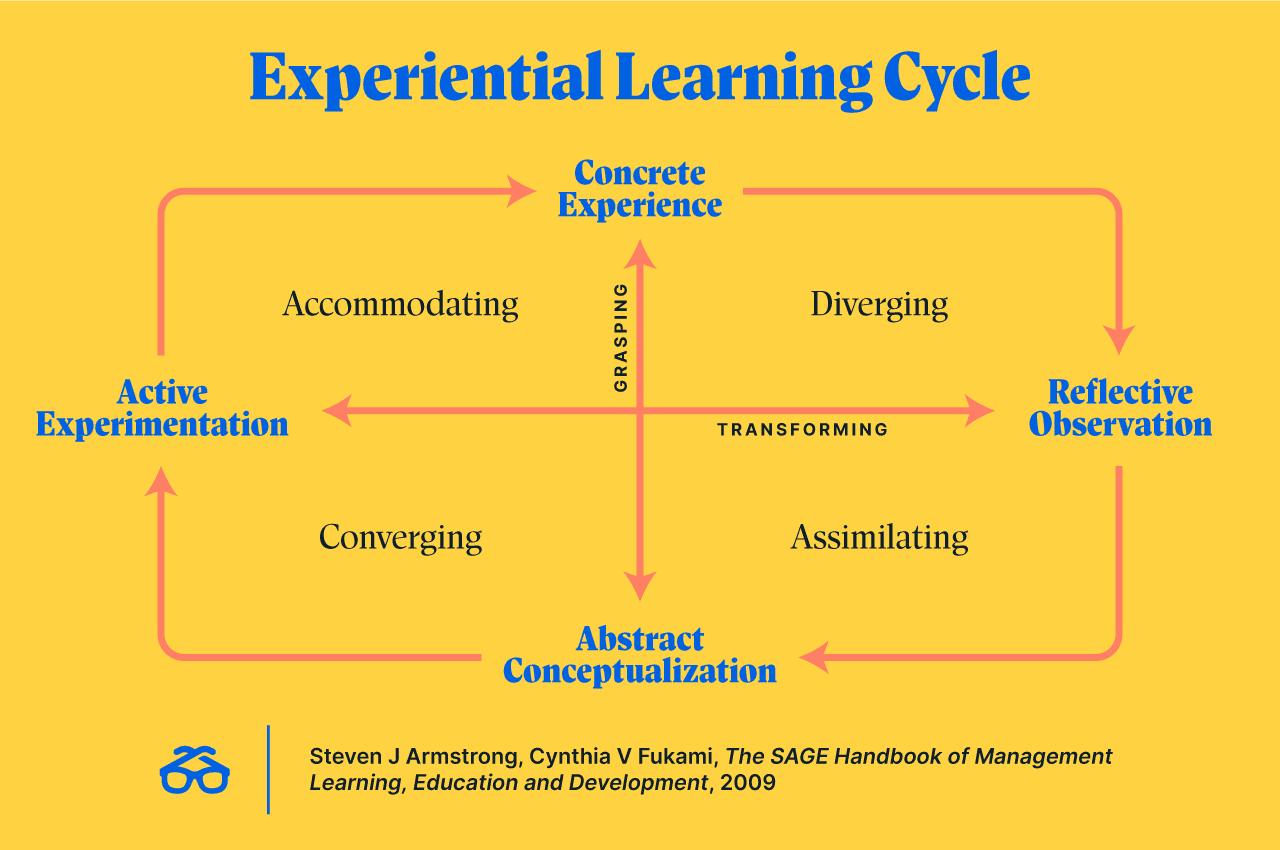Can you become a surgeon by only reading textbooks and research? No, and thankfully not. In fact, people would be appalled to find out their so-called surgeon had never actually made an incision, removed an appendix, sutured a wound or even handled medical equipment. The skills a surgeon needs come from experiential learning, or learning by doing.
While not every skill is as life-and-death as open heart surgery, the takeaway is the same: Expertise is hard to come by without practice. Knowing how to do something and actually doing it successfully are two different things.
We’d even go so far as to say 70% of learning happens during on-the-job experiences. It’s a core piece of the 70-20-10 learning theory.
If one learning method is good, more methods are better.
Say you’re considering adding one method of experiential learning to your L&D program. Providing your employees with only one way to practice what they learn might increase engagement, but it may also unintentionally limit engagement to only those who work well with that form of learning.
According to David Kolb’s Experiential Learning Theory (ELT), there are four different learning styles, each of which focuses on different parts of an experiential learning cycle (ELC). For example, if someone has a mostly “diverging” learning style within ELT, it often means they prefer to watch and collaborate with a group to enter the ELC. As a result, some learning experiences — like solo project assignments — may not always be the best fit for their first experiential learning method.

If one new opportunity increases engagement, imagine if you offered three different options to meet your people wherever they’re at. Here are a few experiential learning opportunities you can sprinkle into your learning program:
- Mentoring and Shadowing. Mentoring and shadowing each begin by matching someone with a subject matter expert. They can be used concurrently or separately to accommodate different learning styles. From there, experiences can differ.
Shadowing can be great for people with a diverging learning style. This is because they enjoy reflective observation, or watching someone perform the skills they’re trying to gain. Mentoring, on the other hand, might be a better first touchpoint for people with an “accommodating” learning style, which is characterized by a desire for experimentation and understanding through the lens of experiences. In that case, a mentor could provide guidance during experimentation and, through conversation, provide insights on previous learner experiences so the learner could come away with a new understanding of those experiences.
- Stretch Assignments. Stretch assignments help managers provide hands-on experience for their people to practice and prove their skills. These are unique opportunities for your people to try something and potentially fail with minimal consequences, because an expert is there to fall back on for help. It’s a little like experimenting in a school lab; someone’s there to make sure things don’t explode.
And people love it. One Degreed client, a global tech manufacturer, used Degreed to make stretch assignments available. As a result, the number of active users increased 121%.
- Internal Projects and Job Opportunities. Projects allow employees to apply newly learned skills and knowledge to real-world, on-the-job situations. They differ from a stretch assignment in that they’re higher stakes because they require more self-reliance and lack direct mentorship. This type of experiential learning has a two-fold benefit: employees get to practice putting their theoretical knowledge into action and organizations simultaneously get work done.
Access to projects and job opportunities can boost internal mobility, saving organizations high costs on turnover. In fact, 41% of employees considering new positions look outside their organization first according to Gartner research. This means a significant portion of workers would rather update their resume, research external job opportunities and go through several interview processes than to find and earn available internal opportunities. Making internal jobs more available and equitable can strengthen your learning and development program, improve the employee experience and keep your valuable people around.
How do you find the right projects for the right people? With the right technology platform, you can create opportunities, tag relevant skills and more — creating a self-service model for growth.
Experiential learning can be your big differentiator. It can inspire your people to stay, grow and become your organization’s biggest advocates. The success of your organization hangs on the satisfaction and growth of your people. Having even one approach to delight them with learning is a win, but having three gives all your people unfettered access to their next big upskilling opportunity.
